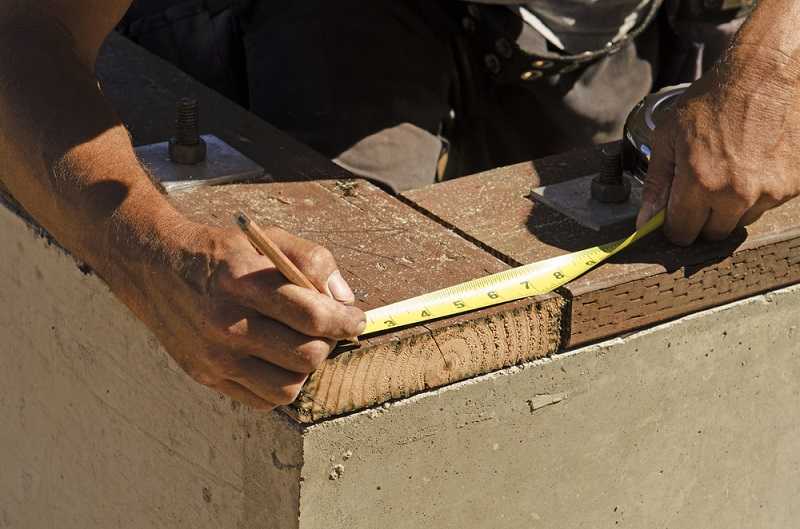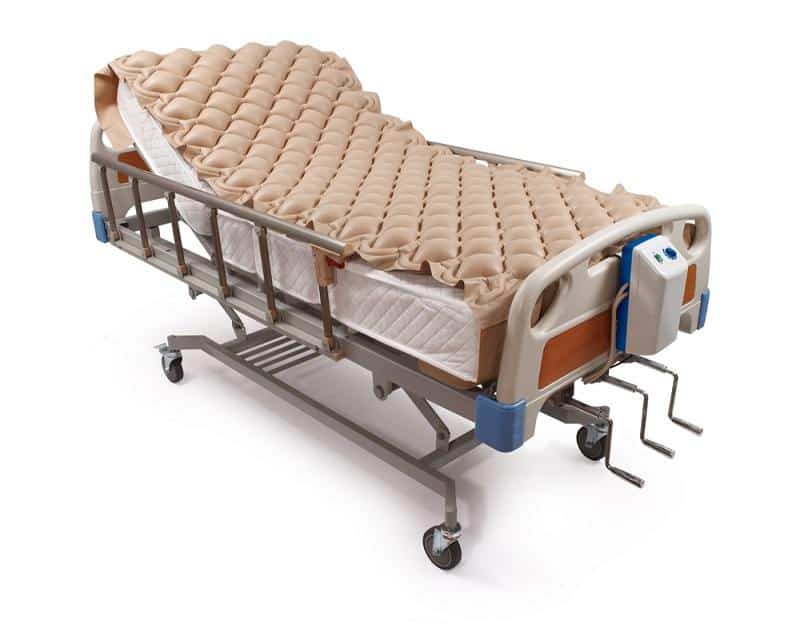How to Attach Pressure-Treated Wood on Concrete
Attaching a piece of wood on concrete seems like a hard job, but it is not. You will only need to know how to do so, which tools to use, and what items you will need.
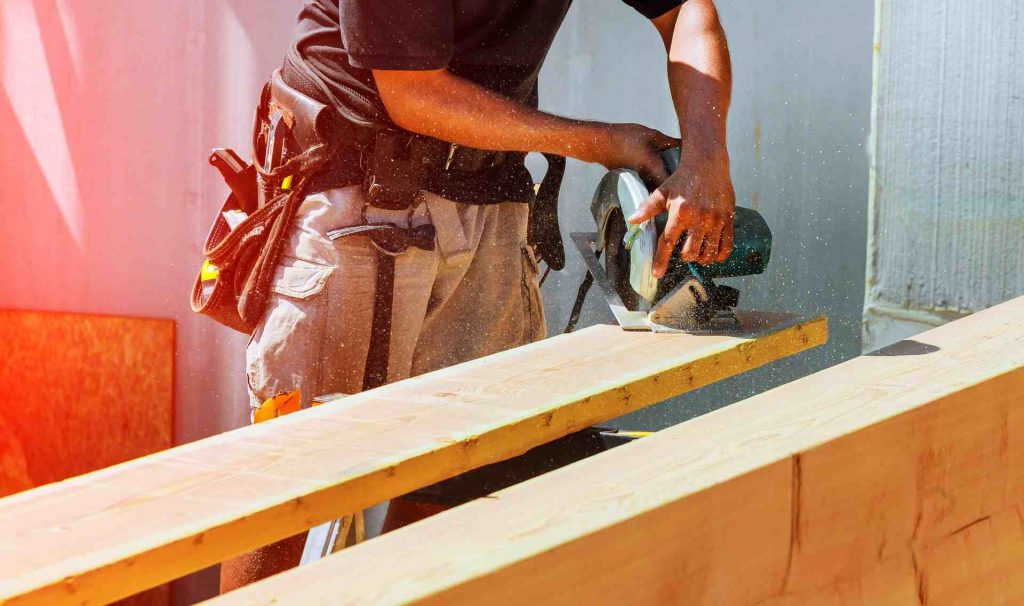
There are many different ways you can adopt to attach a pressure-treated piece of wood to concrete. Each one follows a similar process: open/drill a hole in the concrete and wood, then insert the fastener piece and tighten up.
This is not as easy as it sounds, but it won’t be too challenging, either. If you’re interested in learning more about how this can be possible, read up!
Attaching Pressure-Treated Wood to Concrete
Let’s start by stating the tools you will need. Then, we’ll describe the different fasteners available so you can pick your preferable one accordingly. Here’s how you can start attaching a pressure-treated wood to concrete:
Things You Will Need
- A hammer or power drill
- A VSR drill or power fastener
- Preferable fasteners (more on that later)
- Carbide-tipped masonry bit (they should fit the fasteners)
- Measure tape
- Pencil/marker
- Screwdriver (optional)
- Piece of wood
- Small vacuum/blower (optional)
- Wood lathe (optional)
You can find all of these materials on Amazon, here:
These are the essentials. You may need a few other items but nothing that will be helpful if you follow our advice to the letter. Now that you know what you need, then let’s start by choosing the ideal type of fastener for the job.
Types of Fasteners You Can Use
We need to make sure that you choose the right fastener according to your needs and desires, so we have to explain the different types out there beforehand. Here’s what we mean:
Nails
The simplest and fastest way to attach a piece of wood to concrete is by using a nail. This type of fastener is super helpful, and it demands little to no effort. It is just like any type of nail, just a little longer, so it can match the thickness of the piece of wood and the toughness of the concrete wall.
These concrete nails often have a square tip. This tip helps to get more grip when it enters a wall. And if they’re long enough, they can easily stay inside for decades.
Nails with patterns in the body will be even harder to pull out. So they will hold to the wall even better and for longer. If you’re using nails to attach the piece of wood to concrete, then you’ll need only a hammer. No drill is necessary.
Concrete Screws
A concrete screw is the most popular way to attach pieces of wood to any wall. The process is simple, and it stays there for decades without problems.
You won’t need a hammer or any other type of anchoring/securing device. Just drill the hole on the wall & wood, place the sleeve inside, insert the screw, and tighten it up – and that’s it.
We recommend opening a hole in the wall that’s at least a quarter of an inch longer than the screw. This will prevent it from bottoming up and not entering entirely into the whole and wood.
These usually come with diameters around 0.18 and 0.25 inches. The length can vary from 3.75 to 4 or 5 inches. You will have to choose a masonry bit that fits these measurements.
Apart from that, remember to pick the right head of the screw. You will find Phillips, flat-head, hex, and sometimes even Torx. Make sure you get a screwdriver.
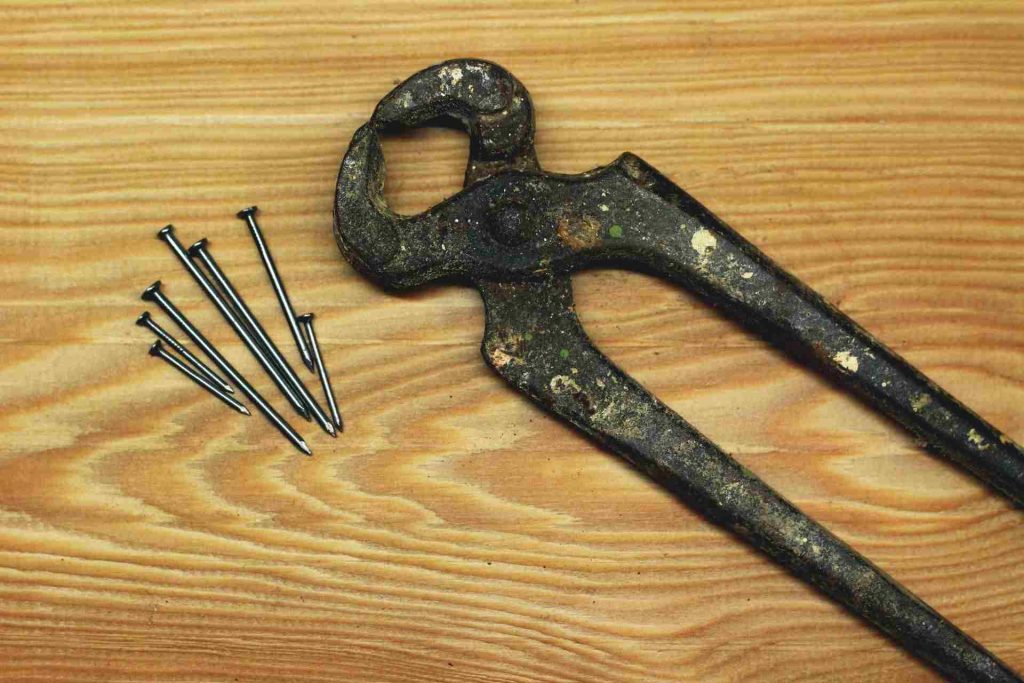
Heavy-Duty Anchors
This is a combination of a nail and a screw. It is a perfect choice if you need to attach a pressure-treated wood that can handle a sturdy fastener.
These consist of a threaded or unthreaded metal sleeve. This sleeve has a center hole where you will place an unthreaded pin. The sleeve goes into the hole, and the pin has the purpose of securing the piece in the hole once you hit it with a hammer or screw with a screwdriver (according to the one you pick).
When the nail/screw enters the sleeve, it will spread to the sides and anchor itself to the wall. This maintains the attachment working for decades without problems.
You will need to drill a hole on the wall and wood still. We recommend a 0.25-inch carbide-tipped masonry bit to do that. And sure enough, the bit needs to be at least 1.25-inches long, so the anchor fits inside.
Soft-Metal Shields
This is one of the oldest mechanisms for piecing stuff up on walls. It is similar to both nails and screws as well. The shape consists of a screw-like body with no pointy end. This secures the metal shield inside the hole firmly.
Because they are often short, you will get the most out of a soft-metal shield if you have a thin piece of wood. Otherwise, you may want to use something else.
You must drill a hole of the exact diameter needed for the piece. Otherwise, you may end up with an unusable piece that either moves too much on the hole or doesn’t fit inside.
The diameter of these soft metal shields is either 0.75 inches or 1.5 inches. You will have to use the right drilling bit to make this possible.
Powder-Actuated Fasteners
Lastly, you will find fasteners that work directly with electrical guns. They are called powder-actuated fasteners, and they are similar to pistols. Many people also call them concrete nail guns.
These are pretty strong and come in different sizes and calibers. You will need to pick something that won’t harm your wood piece or make a mess with the concrete. While this type of fastener is extra helpful, it often makes it harder to attach thick wooden pieces, so we only recommend it for thin pressure-treated wood.
The advantage is that you can use practically any type of nail or pin that fits inside the machine. You can get them from 0.5 up to 3 inches in thickness and in a wide array of lengths as well.
Like nail guns, these powder-actuated fasteners are powerful and dangerous. You will need to use protective equipment, including gloves, goggles, and hearing protection.
It is critical to know that while this is the fastest way to attach a piece of wood to concrete, it is also the easiest to mess up if you aren’t careful.
Here’s how to use it correctly:
- Start by choosing the right nail or pin. Remember that you won’t have to pick any other fastener after that. So the one you pick now is the one that will stick the wood to the concrete. Choose wisely.
- Then, you can place the piece of wood over the concrete wall. Make sure to match the markings with the barrel or tip of the machine. Both the wall & wood pieces should be perfectly aligned.
- At this point, you can fire the gun. The nail/pin should now be inside the wood and concrete. And the piece should be fixed to the wall.
- Without moving the piece, fire the other nail/pin into the other marking(s). By now, the wood should be fixed into the wall without moving. If that’s so, then you’re done.
This could easily go wrong if you aren’t careful enough, so pay attention. If it goes wrong the first time you fire the gun, then taking the nail/pinout can be an issue. And it could end up damaging the piece.
Attaching the Pressure-Treated Wood to Concrete in 4 Steps
Now that you’ve chosen the right fastener for the job, then you can proceed with the rest of the installation. Here’s what you need to do:
1. Measure the Holes
The first step is to measure where you’re going to place the bolts on the concrete and the wood. Remember to select the right place, so the wood stays fixed depending on your needs.
- Use the measuring tape to find the width and length of the wood piece. Then measure it on the wall to make sure it fits.
- Then, make some marks following these measurements. And find the ideal attaching points to which you can open holes.
- Make sure the wood and the wall markings match well so you won’t have any problem later. Use the measuring tape to get the most accurate markings possible.
This is important because it will help you make more accurate holes when drilling. Otherwise, you may end up with crooked holes.
2. Drill the Holes
Now we start with the truly complicated process. You should first know the diameter of the piece you’re drilling. (You can pass this step if you are using the powder-actuated fastener).
- Start by setting up the power drill. Use the masonry bit that can go through concrete. Make sure it matches the diameter & length of the fastener before starting.
- Then place the drill over the mark you made before. And start drilling.
- The hole should be neat and as clean as possible. Use the vacuum to get rid of the dust excess.
- After opening the hole on concrete, you can change the masonry bit and instead use an equal-diameter bit that works with wood.
- Then open the hole in the wood following the markings you made before.
After having the holes ready, you can proceed to screw in the fastener you picked.
3. Inserting the Fastener
If you picked any of the fasteners that needed screwing or hammering, then this step is for you.
Here’s how to proceed accordingly:
- With the hole ready at the ideal length & diameter, you can place the fastener inside.
- You will need to align the piece of wood and the concrete markings. Remember to be careful as taking some of these fasteners (heavy-duty anchor and concrete screws) can be pretty hard.
- Once you have everything aligned, you can proceed to fasten up the wood to the wall using the preferred fastener.
- If it is a nail, hammer the piece into the hole. And if it is a screw, then do the same anyway. For heavy-duty anchors and soft-metal shields, the process is no different.
- Do the same in all the markings on the wood and concrete. Remember not to move the wood piece while doing this as you may end up with a crooked job.
Once the fastener(s) is inside the hole on the wood and concrete, then you can start tightening.
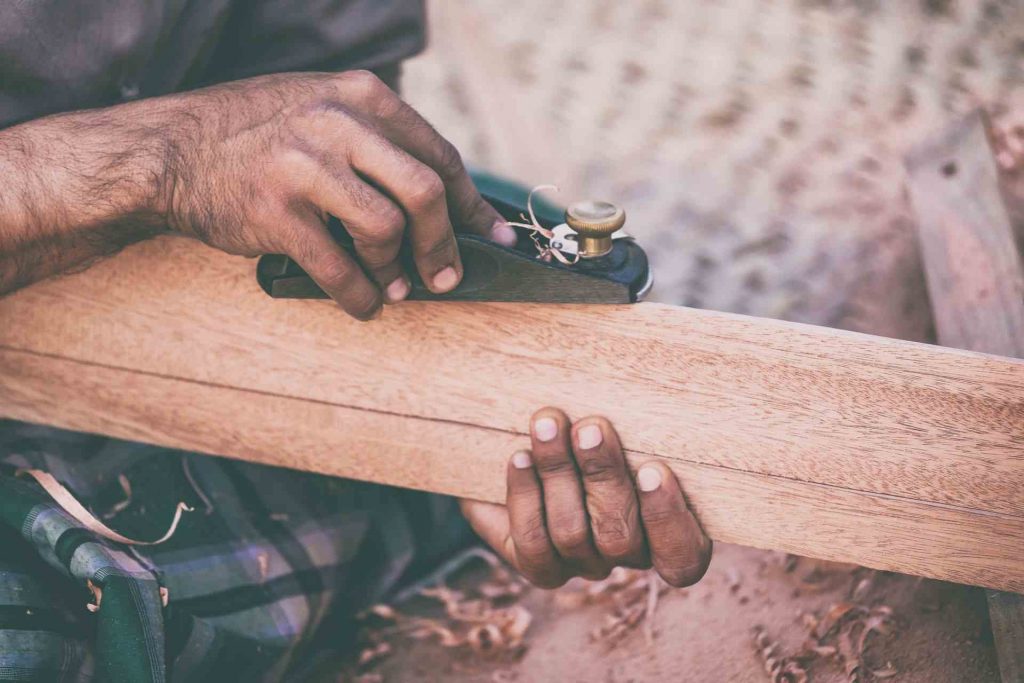
4. Tightening & Checking
Finish by tightening every fastener inside the wood and concrete. This will attach the piece firmly into the wall and ensure that it doesn’t fall easily. Remember to make a last check and see whether everything is crooked or aligned according to your needs.
We recommend not taking the wood off the concrete wall unless it is really crooked or looks too ugly. To prevent this from happening, you can always use the help of another person to keep the piece aligned and drill, hammer, or screw the fasteners when needed.
Attach a Pressure-Treated Wood to Concrete Now!
As you see, attaching a pressure-treated wood into a concrete wall is not as hard as it seems. But you will still need to follow the right steps and choose the proper fastening method according to your requirements.
If you follow our advice to the letter, then attaching a pressure-treated wood will be a piece of cake. So don’t waste any time and start doing it now!
Last update on 2024-03-17 / Affiliate links / Images from Amazon Product Advertising API. WaterFilterly is user-supported. We might receive a commission on any purchase you make through clicking links on this page.

